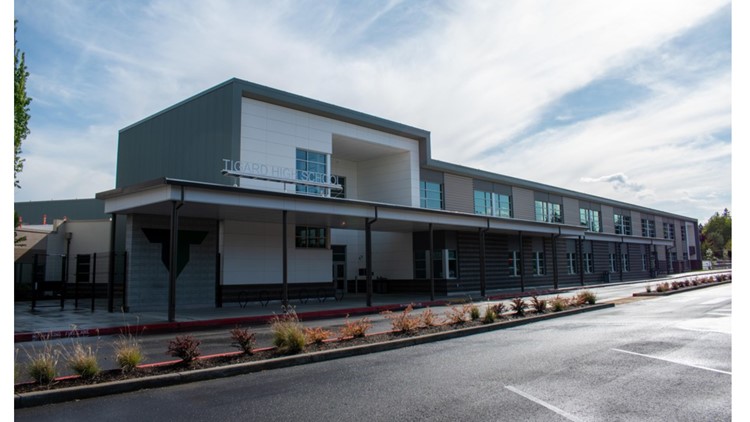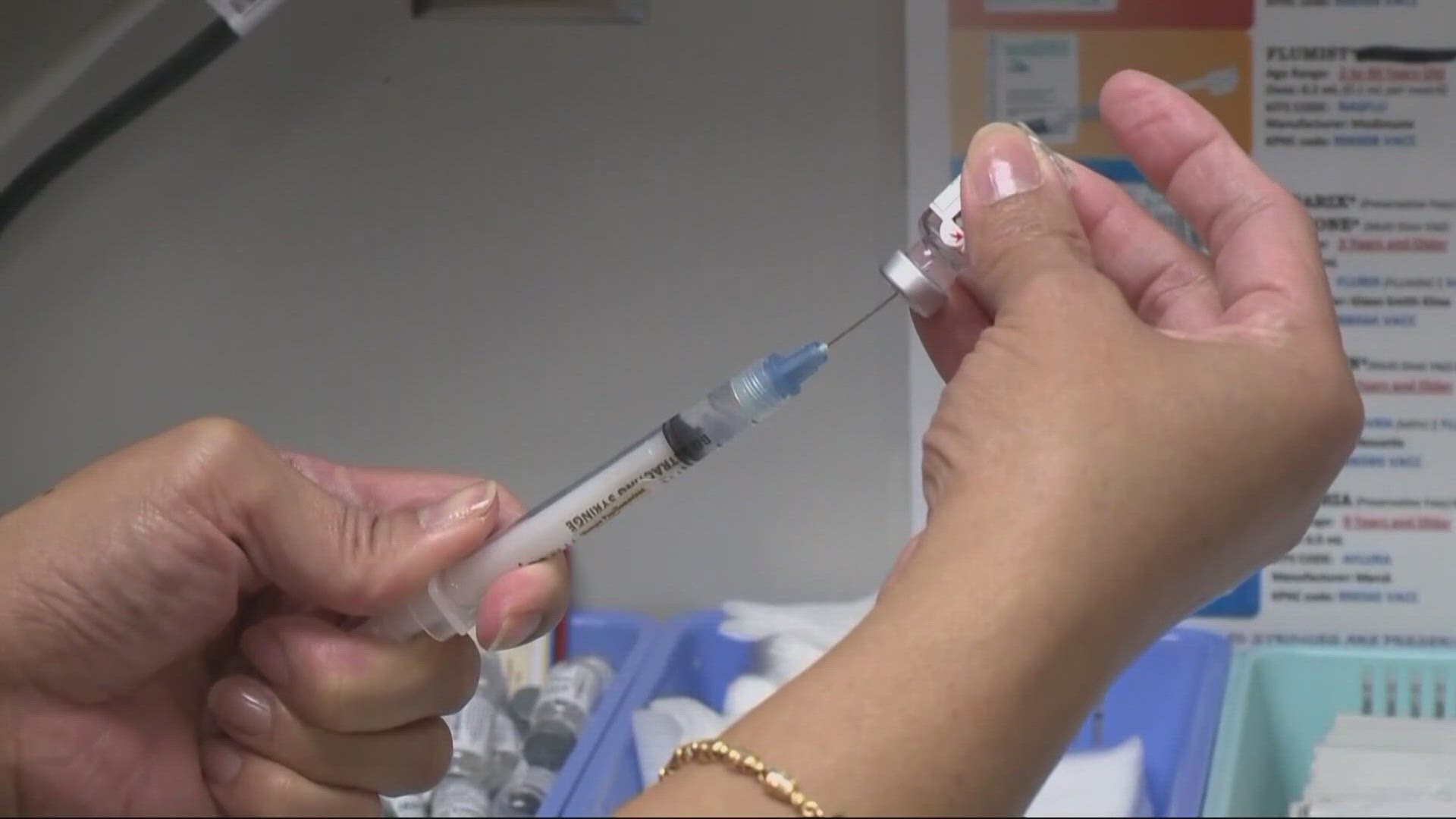Across the country, COVID-19 has closed most schools for the year. The whole education system for kindergarten through 12th grade shifted almost overnight from a physical, classroom-based teaching model to a virtual one. Some states have abandoned requirements, but in the Northwest, Oregon and Washington have committed to a distance learning model that means classroom teaching will continue to the end of the school year.
Of course, that looks different in every school, and in every home. But how are schools keeping track of student engagement and contact?
In Tigard-Tualatin, communication starts with care
Tigard-Tualatin schools were first to close because of COVID-19, even before the state’s order to do so. As superintendent Susan Rieke-Smith describes it, she saw the writing on the wall once Gov. Kate Brown’s order limiting large groups came out.
“When you’re talking about 250 kids, you’re describing an elementary lunch period,” said Rieke-Smith.
From there, it was change after change. From a weeks-long closure and supplemental learning to a closure for the rest of the year and “Distance Learning for All.”
As the district has rolled out its plans, Rieke-Smith said all communication with students and families started with a “social emotional” check.
“Our primary goal is doing the wellness and safety checks, our second goal, obviously, is to instruct,” Rieke-Smith said.
That’s what the Oregon Department of Education advises – focus on “care, connection, and continuity of learning” in that order.
At the high school level, the goal is for second period teachers to have one two-way communication with each student at least once a week. That could mean an email, or a phone call.
Between 90% to 100% of seniors have had conversations with staff about graduating, said Tigard High School principal Brian Bailey. But with the rest of high school students, the level of interaction varies widely. Some teachers report connecting with 90% of students, while for others it’s as low as 25%.
Bailey said the level of students responding to “social emotional” checks is higher than the level of student participation in academics.
“Some kids, especially our seniors, if they’ve already passed that class based on the data from ODE, they don’t have to engage,” Bailey said. ODE’s pass/incomplete guidance for the Class of 2020 marks students as having completed a course for the year, if they were passing it, at the time schools closed.
Tigard High School on May 3, 2020.
Elizabeth Miller/OPB
For students who haven’t engaged, the district is deploying teams of staffers to figure out how to reach them.
And as school focus shifts to learning, Bailey said Tigard-Tualatin schools are paring down instruction.
“We’re not going to recreate what was in brick and mortar, we’re not going to cover all the standards that we typically would have in a year, but we’ll continue to flex their brains,” Bailey said.
At the middle school level, one principal reports over 95% of families have made that initial contact with schools. Another principal said out of 865 families, nine have not been located.
At Bridgeport Elementary, principal Jordan Mills reports 80% of students are “consistently participating” in lessons and Google Hangout sessions. Every elementary school is using a non-participation form to keep track of students who aren’t consistently involved and checking in on those families.
“We’re having conversations with families and parents, and seeing what they need, and talking to them about how they’re managing stress… and connecting them with resources,” said Alberta Ride Elementary principal Rory Moore.
Tigard-Tualatin is not alone in prioritizing care in their first communications with students. But as distance learning continues to the end of the school year, it may prove useful for teachers and school administrators to know who is engaged – and who is missing.
In other large districts, levels of attendance tracking vary
In surveying Oregon and Southwest Washington’s largest school districts, some districts say schools are keeping track of student engagement.
Evergreen Public Schools in Washington reports approximately 93% student engagement at the high school level, 94% engagement at the middle school level, and 95% engagement at the elementary level.
School principals in Vancouver Public Schools report slightly lower rates of engagement. District officials say between 75% and 96% of families have connected with at least one school staff member.
A sign in front of Tigard High School lists every student in the class of 2020.
Elizabeth Miller/OPB
Even if districts may not have data on all students, they are likely tracking high school students.
It all comes back to graduation — for seniors not passing all their classes, school administrators have been advised to connect with students and plot a plan to graduate. For seniors that have “graduated” under the new rules, school staff at one Salem-area high school said they connect in the hope they will continue some learning.
In Salem-Keizer Public Schools, officials said there are 205 high school students that haven’t been reached. The district has been using email and an app called Remind to call and text students and their families. Schools recently sent out postcards asking families to call their children’s schools if they haven’t already.
At a recent Portland Public Schools board meeting, officials reported high school staff had connected with 94% of seniors and 92% of students in 9th-11th grades.
Beaverton School District say they are not tracking regular attendance but expect all teachers to have reached out to students and encourage participation in remote learning.
Both the Hillsboro School District and Eugene School District 4J report school-wide tracking, but did not provide numbers to OPB.
Six other large districts did not respond to OPB’s request for attendance tracking information.
What do states require, anyway?
Improving school attendance has long been a priority for the Oregon Department of Education. The state’s “Every Day Matters” campaign aims to reduce Oregon’s number of chronically absent students and in turn, get more students to graduation.
But in a pandemic, the state has lowered the bar to “student engagement,” meaning some kind of contact with the student, rather than consistent attendance in classroom learning.
The Oregon Department of Education says school districts should not track attendance as they would if physical schools were open. Instead, ODE advises schools to “create a system that logs student contact.”
ODE will not collect attendance data for the period of school closure, and the state received permission to waive accountability measures related to attendance for this school year.
The state also asks districts to make sure they log attempts to contact students they cannot locate. Those documented attempts to contact a student are part of requirements for a clause in the distance learning guidance – if a student isn’t located by the end of the school year, they receive the pass or incomplete grade they had when schools closed March 13.
In Washington, “districts will be expected to take attendance consistent with their continuous learning plan,” but that doesn’t mean districts will keep attendance the same way.
For Oregon and Washington, the attendance data collected from each district is likely to be as different and varied as how schools across the two states are handling instruction in the time of COVID-19.
For Tigard-Tualatin’s Bailey, he’s worried the time away from school could further deepen already-present divides between students.
“Our sole focus in this district is on closing our achievement gaps, and that just became monumentally more difficult in this setting,” Bailey said.
“It was already a difficult task, and now I’m worried about those gaps. How wide are those gaps going to get?”





